My Early Stations
Note: Additional information about evolution of my stations is at
the bottom of the page.
 Logbook showing first contacts
Logbook showing first contacts
WV6MIN (Greg) was my first contact on August 5, 1960 at 12:15 p.m. We
took and passed our General Class exam together. Greg is now N6GK
and we continue to be friends.
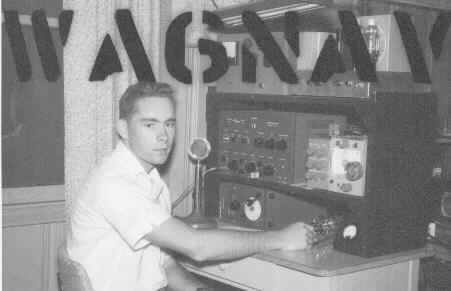 1962 QSL Card
1962 QSL Card
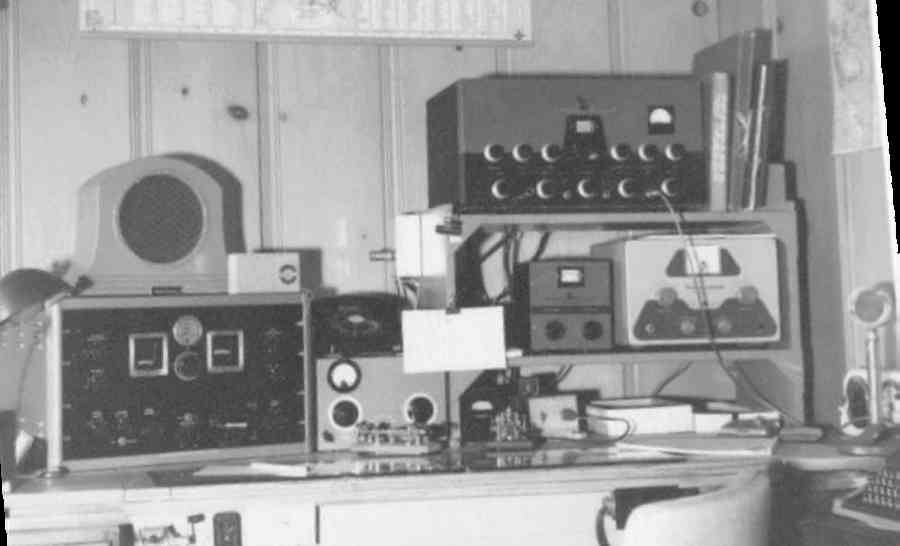
Station from 1961 SuperPro BC-779A Receiver (left); Viking
II Transmitter (top right); DX-40 Transmitter (bottom right); Homebrew
antenna tuner (center).
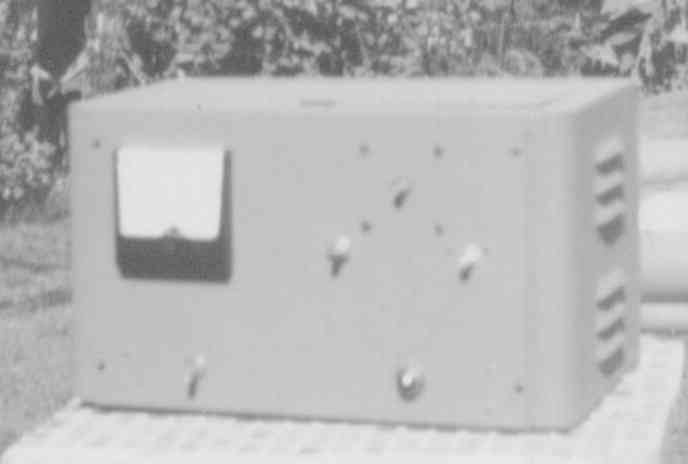
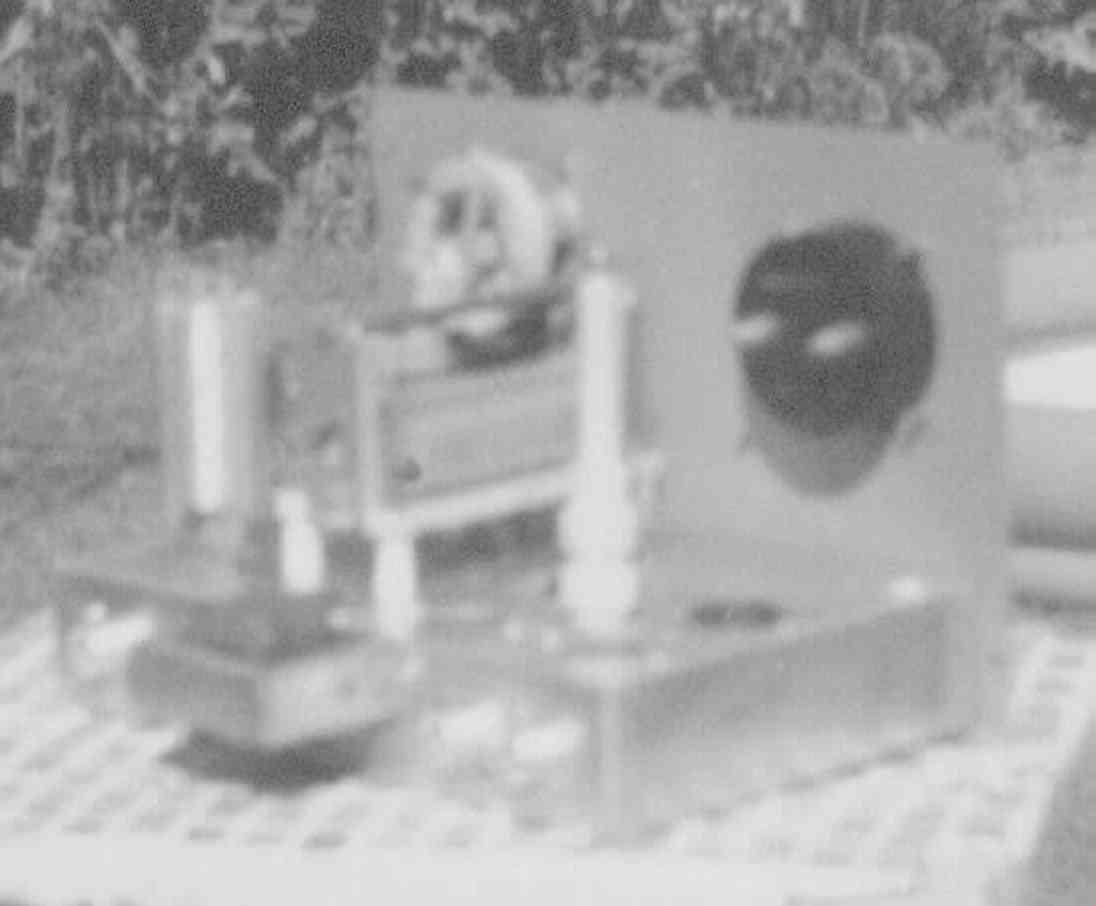 (9/63) Home Brew 4 x 837's - 1 KW Amplifier
(9/63) Home Brew 4 x 837's - 1 KW Amplifier
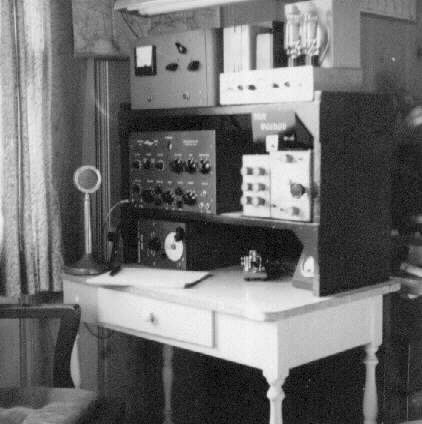
February 1964 - Shows home brew receiver (modified BC-453 with converter)
along with the Central Electronics 20A SSB exciter and amplifier
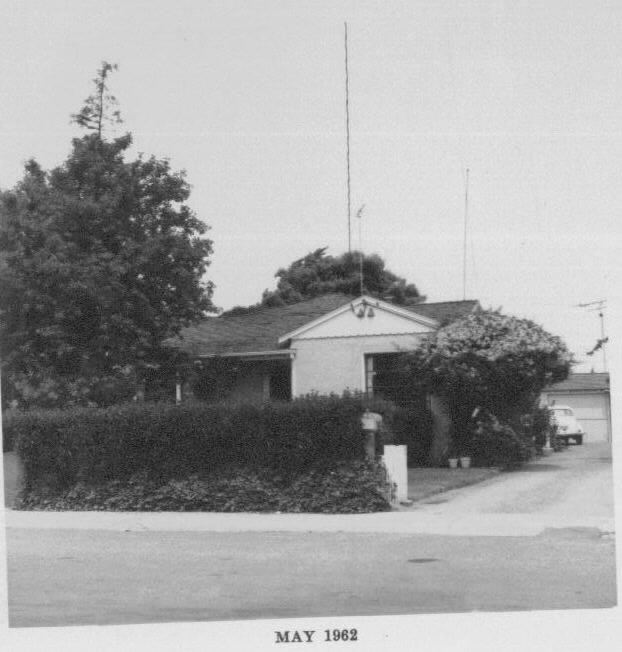 QTH for WA6NAV with a 1957 Morris Minor Car
QTH for WA6NAV with a 1957 Morris Minor Car
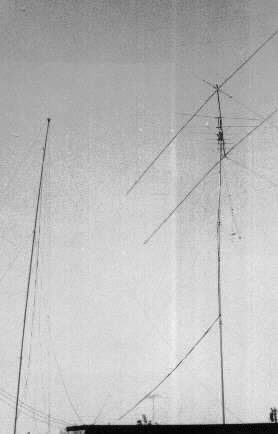 80 & 40 meter inverted 'V' @ 50 feet & 20 meter Quad
80 & 40 meter inverted 'V' @ 50 feet & 20 meter Quad
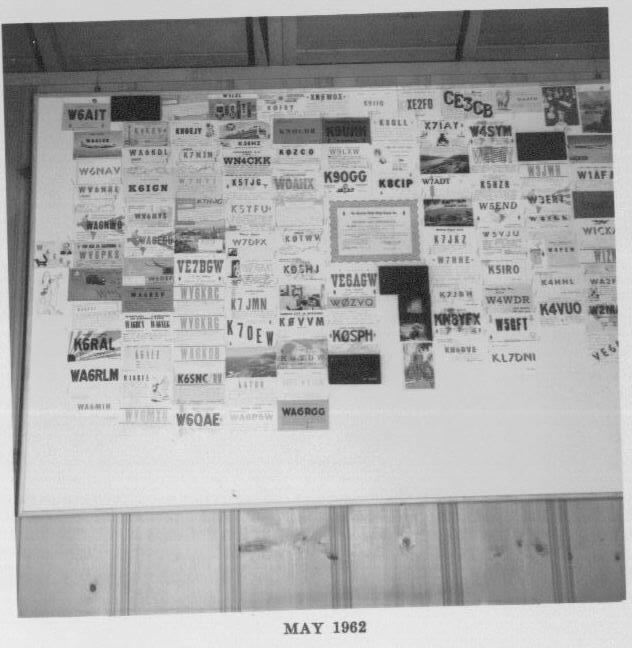 QSL Board 1962 Notice VE6AGW QSL Card
QSL Board 1962 Notice VE6AGW QSL Card
Additional information
First Station
On the left is my first receive. It is a WWII surplus BC-779A SuperPro.
The tubes inside all have metal envelopes. What you don't see is an
external power supply that sits on the floor. It weights about 60 pounds
between the two units. I kept it on 24 hours a day to minimize thermal
drift!
The bottom right is my first transmitter. It is a Heathkit DX-40 using
crystal control with 75 watts input power. CW and carrier modulated
AM were used.
Above the DX-40 is my second transmitter - a Viking II. The frequency
control is by the VFO unit to the left of the DX-40. The Viking II
used two 6146 tubes for about 150 watts. Both plate modulated AM and
CW were supported.
The gray box to the right of the BC-779 receiver is a modified Johnson antenna
tuner. A Blue-Lightning BUG is in front of the tuner.
Second Generation
The SSB was replacing AM quickly by 1962. During my senior year in
high school I built my second generation station. The transmitter is on the
middle shelf on the left. It is a Central Electronics 20A SSB exciter
operating at 20 watts. The VFO control is on the bottom left.
The receiver is on the middle right. It is a home-brew unit.
The main unit on the right is a modified military aircraft BC-453 receiver
operating in the range of 190 - 450 KHz. I built a new case, product
detector for SSB, and power supply. To the left of the receiver is
a home-brew crystal controlled tube type frequency converter for 80, 40,
and 20 meters. The top left is a home-brew linear amplifier using four
837 tubes in a grounded grid configuration. Top right is a home-brew
power supply for the amplifier. This unit would run 1 KW PEP or 500
watts CW as I remember. The black box to the right of the bug is a
home-brew VSWR bridge. The mic is a D-104.
Antennas
My QTH was on the west side of San Jose California. In the rear yard
was a 2 inch diameter aluminum 50 foot military surplus field antenna mast.
It supported inverted 'V' antennas for 80 and 40 meters. When it rained the
rope guy lines got tighter causing the mast to bend. On the garage
is a two element cubical quad antenna for 20 and 15 meters. My first
car, a 1957 yellow Morris Minor 1000, is in front of the garage. John
Matthews and several other high school friends help raise the quad antenna.
John is now N7MRM.
 Logbook showing first contacts
Logbook showing first contacts 1962 QSL Card
1962 QSL Card

 (9/63) Home Brew 4 x 837's - 1 KW Amplifier
(9/63) Home Brew 4 x 837's - 1 KW Amplifier
 QTH for WA6NAV with a 1957 Morris Minor Car
QTH for WA6NAV with a 1957 Morris Minor Car 80 & 40 meter inverted 'V' @ 50 feet & 20 meter Quad
80 & 40 meter inverted 'V' @ 50 feet & 20 meter Quad QSL Board 1962 Notice VE6AGW QSL Card
QSL Board 1962 Notice VE6AGW QSL Card